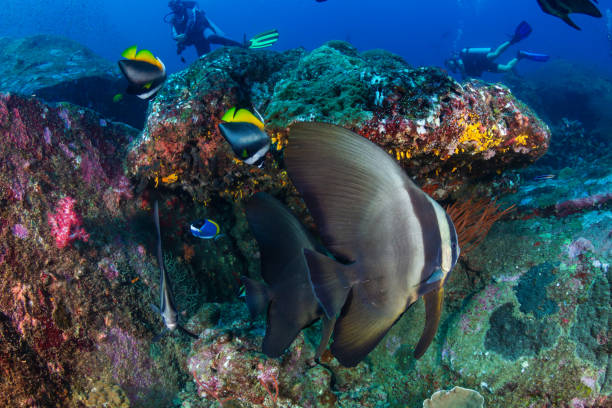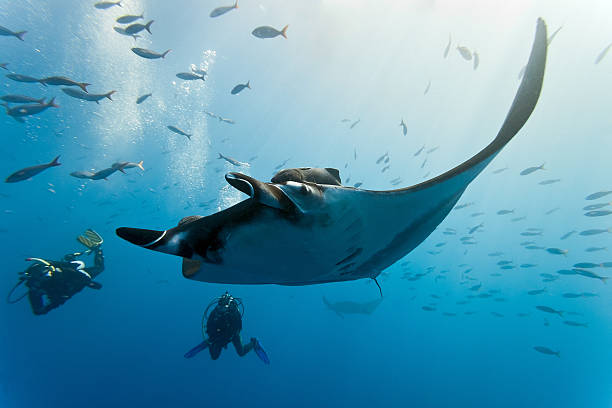Elephant Head Rock is a popular dive site located in the Similan Islands, Thailand. It is named after a large rock formation that resembles the shape of an elephant’s head, hence its unique name. Here’s some information about diving at Elephant Head Rock:
- Location: Elephant Head Rock is situated in the Similan Islands Marine National Park, which is located in the Andaman Sea off the west coast of Thailand. It is part of a group of islands known for their pristine beaches, clear turquoise waters, and abundant marine life.
- Underwater Topography: The dive site features a massive granite pinnacle that rises from the depths to just below the water’s surface. This unique rock formation is the highlight of the dive, resembling the head of an elephant when viewed from certain angles. Divers can explore the underwater caves, swim-throughs, and crevices that have formed around the pinnacle.
- Marine Life: Elephant Head Rock is teeming with marine life, making it an exciting dive site for divers of all levels. The area is known for its diverse coral formations, including hard and soft corals, sea fans, and sponges. Marine species commonly spotted at Elephant Head Rock include reef fish, such as angelfish, butterflyfish, and parrotfish, as well as various species of moray eels, lionfish, and nudibranchs. There is also a chance to encounter larger marine creatures, such as barracudas, trevallies, and sometimes even reef sharks.
- Diving Conditions: Diving at Elephant Head Rock can vary depending on weather and sea conditions. The visibility is generally good, ranging from 15 to 30 meters (50 to 100 feet) or more, allowing for excellent underwater visibility. The water temperature ranges from around 27-30°C (80-86°F) throughout the year, making it comfortable for diving with a wetsuit or a thin rash guard. The currents at Elephant Head Rock can be moderate to strong, so it is recommended for divers with some experience.
- Liveaboards and Day Trips: Elephant Head Rock is often visited as part of liveaboard trips that explore multiple dive sites in the Similan Islands. Liveaboards offer the advantage of spending more time in the area and allowing for several dives at different sites.
- Season and Accessibility: The Similan Islands Marine National Park is open to visitors during the high season, which typically runs from November to April. It is closed to tourists during the monsoon season from May to October. The dive sites, including Elephant Head Rock, are accessible by boat, and the journey from Phuket or Khao Lak to the Similan Islands takes a few hours.
Diving at Elephant Head Rock provides an opportunity to explore a unique underwater environment with fascinating rock formations and abundant marine life. It’s recommended to dive with a certified dive center that follows safety protocols and sustainable diving practices. Whether you’re an experienced diver or a beginner, Elephant Head Rock offers a memorable diving experience in the stunning Similan Islands.


